Kindicocha
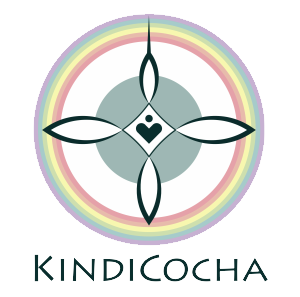
In late October as I was heading south towards the Ecuadorian border to renew my Colombian visa I decided I take a detour and see some of Putumayo. This one of the larger provinces in Colombia bordering Ecuador and Peru in the south. I decided to go to Mocoa and to stop in Valle De Sibundoy (the Sibundoy Valley) on the way. The valley is home to five small towns: Santiago, Colón, tiny San Pedro, Sibundoy and San Francisco. I headed to Sibundoy on an overnight bus from Cali.
This was a strange journey through roads that were, until very recently, dangerous to pass due to robberies, even now buses travel in convoy on this part of the Pan American highway. In the dark night from my window I could see buses and trucks stretching way up ahead of me and way behind: a great snake of lights making its way south. And I was reminded that night why I don’t like taking overnight buses: I tossed and turned until the early hours, when, in sheer exhaustion I caught some rest and then over slept my connecting stop!! I had to get out in the middle of nowhere and hitch a ride back to the nearest town to get back to track for Sibundoy. I finally got there exhausted and promptly went to bed to catch up on the hours of attempted sleep on the bus.
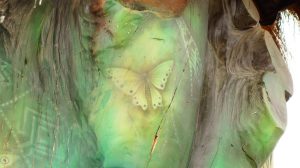 Detail from painted wooden carvings in Sibundoy
Detail from painted wooden carvings in Sibundoy
The Sibundoy Valley is an area that was and still is inhabited by the Inga people (Inca) who speak Quechua and the Kamsá (Kamëntšá, Camsá, Kamnsá) whose language is Camëntšá. I spent a few days in Sibundoy exploring this small but busy town. The local culture is evident everywhere: in the colourful paintings in the town hall, the stunning carved and painted wooden carvings in the town square and the colourful craft and jewellery that is made and sold there. This felt like a very special place where the indigenous culture had remained strong and now mixes naturally with our modern world.
Wooden carvings in Sibundoy
In nearby Colón, I discovered an eco-community! It was one I had attempted to contact earlier in my journey but it seemed to have changed names. From Sibundoy I phoned Kindicohca directly. They were not taking in volunteers at the time but to my delight, invited me to take a visit. I spent a morning with Laura (from Argentina) at Kindicocha and got to see a little of the project. The description of the place and the dream that it holds really appealed to me, there was something very familiar about the description of it. Laura asked if I would like to spend a few days there. We agreed that I could come back in a week, on my way back from Ecuador.
A little bit of magic in Valle de Sibundoy (near Colón)
I headed to Mocoa, to the edge of the rainforest, and on to Ecuador.. and I could write several blogs on how stunning it all was but I will let images of this part of my journey speak for themselves. You can see these images in a separate blog: Mocoa-Otavalo-Las Lajas
So, on my way back from Ecuador I arrived at night back to Valle De Sibundoy and I asked the bus driver to drop me where I thought I was just a quick walk to the community. I walked in the dark along a country lane but I had a funny feeling that I was not where I was supposed to be. My trusty headlamp began to run out of battery so stumbled in the greyness and wished I had a lighter backpack. But there was a bright moon: the night was gorgeous and I enjoyed the walk despite being relatively lost: I felt safe in this landscape. At this stage my phone was still working (since then the Colombian mobile-phone-powers-that be decided to block it..) so I called Laura, and after several fun calls in my ‘phone Spanish’, checking landmarks (of which there weren’t many in the dark) I finally arrived.
Landscape in Valle De Sibundoy
The next morning I awoke feeling tired (its a bit of a theme in this instalment) but there was a yoga class and I was delighted to join. We had breakfast together afterwards and even as I was eating I didn’t feel well. I couldn’t focus on the conversation, I felt stoned; I could have slept standing up! So I went back to bed to rest for a while but I ended up sleeping all day! I got up in the evening for a short while and then I went back to bed and slept solidly till morning. The residents are used to people having strong reactions when they arrive on site; they say it could be the place, or the Borrachero (Brugmansia or Angels trumpet) flowers which are abundant there. Their smell is intoxicating and they are a powerful medicinal plant that are now, like so many stunning plants, officially extinct in the wild. The name Borrochero means ‘to be drunk’: this is the effect its ingestion can have on you and its what I was feeling. Whatever it was: I felt absolutely zapped of energy, and it ended up lasting three days. I regained my energy and finally I could get out and help out with planting and transplanting in the garden with one of the founders: Camillo Barrero, a biologist with a wealth of local indigenous plant wisdom. I was delighted to work with him!
Borrachero (Brugmansia) flowers
While I was there I learned about some more about the area and this organisation: For hundreds of years this fertile region was cultivated using traditional methods and it is just in the last 80 years that industrial agricultural methods have been introduced. The site I was staying on: Dantakunapa means the cot of the Danta which is the tapir andino or el danta del Páramo (ie the Andean/Paramo Tapir: a local endangered species). From working on this land, Camillo says that the area was intensively harvested for fruit for decades but within a few years of care and attention, has come back to natural and balanced health. It was interesting to compare the abundance and aliveness of this reserve with adjacent strained looking mono-crops.
The garden in Kindicocha
Kindicocha evolved initially from an organisation called la Fundación Buenoy Yumartán Aldea Ecológica (BYAE): formed in 2005 by Camillo Borrera and Juliana Hoyos, with others who had come together to preserve lands in the Andean-Amazonian region. Over the years the organisation has built up a series of six reserves in the valley (described below). BYAE has been primarily focused on land preservation but this year (2017) Kindicocha was formed. Its focus remains on biodiversity and preservation but now also lies in education, creating a new economy and on starting a living community on one of the reserves. There are currently 12 people involved in this process and it is early days for their emerging community.
Kindicocha have created a mandala: it is like looking down at a hummingbird within a circular rainbow. The four sections of the Kindicocha mandala help describe the organisation: each section represent different aspects of the organisation that is now emerging:
- Krumi (the head of the hummingbird) represents the spiritual well-being of the community. The community consciously provides space and time for individual and collective spiritual well being.
- AMA (The righthand wing) represents education and the proposal to create new type of school that promotes indigenous knowledge. It will focus on the qualification of researchers as regional leaders in the design and implementation of research and technological development projects on Andean Biodiversity. And a Global Intercultural School for supporting and promoting the talent, knowledge and creativity of the region, prioritising local species, indigenous culture and the conservation of natural ecosystems.
- JAN (the tail) represents the organisations natural land reserves. The upper basin of the Putumayo River is and area with some of the greatest diversity of plant life in the world. 829 species of flower and more than 113 types of wild orchids have been reported there. This initiative is about protecting and using the natural heritage of this region including the cultivation, propagation and community promotion of wild orchids, as an alternative ecological – economic system. A series of reserves have already been created including:
- Buenoy: 8 hectares
- La Reloja: 300 hectares of forest and paramo (Paramo is a high altitude humid forest – describe – from internet)
- Yumartan: 40 ha of humid forest
- Dantakunapa: (where I stayed) 2.5 ha of agro-forestry permaculture
- Miskyllactama: 4 ha high altitude humid forest
- Murrucucú: 120 ha humid forest
These are all privately protected areas belonging to the foundation as centres for environmental research and education. They are integrated into the forest corridor of southern Colombia and are valuable examples of the flora and fauna of the territory and are open for internship programs, development of research projects in biodiversity, conducting ecotourism and therapeutic activities. These reserves are protected by Colombian Law and by the principles of the Colombian Network of Natural Reserves. And they are part of 30 others in the Alto Putumayo forming a collaborative coalition. While reading about his area I found an interesting reference for indigenous land rights in Colombia which is worth reading.
“Sibundoy Valley is a picturesque bowl-shaped valley that funnels water into the Putumayo River. These lands are the ancestral territories of Inga and Kamëntsá communities, and processes are underway to create a protective ring of indigenous reserves around the valley….At the end of 2015, the Kamëntsá Biya Alto Sibundoy reserve was expanded by 97,290 acres, and now covers 105,000 acres including large swaths of páramo ecosystems. At the same time, the Colón Reserve was created, giving 3,800 acres of land to the Inga people….In early 2016, the Kamëntsá-Inga reserve of San Francisco was created, totaling 42,000 acres. This was followed by the creation of the Inga reserve of San Andrés, with an area of 33,500 acres.”
- Siwinchyanga (The left hand wing) represents the creation of a new form of economics. In Spanish Eco-no-mia means ‘Eco not mine’ and Kindicocha want to change this negative connotation to Eco-si-nuestra which means ‘Eco- yes ours!’ This initiative is about promoting different local enterprises, encouraging holistic healthy sustainable companies. As the Alto Putumayo sees economic development it is also seeing the degradation of its lands through land exploitation in industrial agricultural methods, construction, pollution etc therefore they want to focus on the design and promotion of ecologically and economically profitable alternative pilot systems: integrating scientific and technological innovation with indigenous knowledge for community empowerment.
- And the rainbow represents communication and connection between all aspects of the organisation.
So these ideas, these dreams of an holistic relationship in community, in relation to the sites that they live on, the local and regional environment and in local education and economy are all beginning to take shape: with designs for the new school under way, plans for new homes and new business being formed. Currently where I stayed there are just a few very simple buildings: a simple existing dwelling with a few rooms and shared accommodation for two residents and volunteers, Camillo’s house, a round mud house that is near completion, the Jibtrindé: a beautiful two story building open on 4 sides to the garden, for community sharing, a compost toilet and the orquidarium.
Jibtrindé and compost toilet
View from Jibtrindé of geodesic dome and orquidarium
Orchidarium in Kindicocha
They practice a mixed, and what appeared to be ad-hoc approach to growing on the Dantakunapa reserve. Initially I couldn’t see any order in the approach, but as I explored I began to see the alleys of flowering plants for pollinators such as bees butterflies and the plentiful hummingbirds, areas of fruit trees, the orchid shelters and the swales with reeds and water loving plants that carry water around the site and allow for retention in heavy rains and the shading of theses canals that prevents excessive water evaporation. There is an absolute proliferation of life on the site. There are signs of human intervention but it is done in balance and respect with the living system.
It was a pleasure to work with Camillo for a few days; a group of us planted in a respectful way: we set intentions for plants as we created a living mandala. He sang as he worked and we talked about the different species of plants and insects. It was a pleasure to work in this garden and a pleasure as we we all sat in the shade of a tree and drank mild chicha during a break. I loved the wildness and the respect and the lack of pushing that is involved in this relationship with the garden. I only got a brief window into the work that is done there and the methods, but I could get a strong sense of the gentleness, understanding and intention that inspires me to trust that this is really creating a new way of living – in harmony with the creative systems of life. This is a stunning example, on just a small scale of how to bring indigenous knowledge of the land, knowledge of biology botany, and permaculture together in creative and regenerative ways.
I was just in Kindicocha for a week, but it was a rich week! I joined a few minga’s and joined a women’s group one evening for a discussion around a new idea of creating a circle of economic support for a group of women to start thier own businesses. There were gorgeous moments: planting in the garden, meals together, drinking chicha at night with popcorn, marvelling at the colour of the beans picked from the garden. Kindicocha hit some kind of perfect sweet spot for me: from a personal perspective I was reminded of absolute importance for us to be in nature to be in contact with the soil and with plants; it is grounding, calming and very tangibly brings us into deep appreciation of life. I learned about kindness and community: there were simple things that we did together that brought us close: we ate together, we said grace together: holding hands and giving thanks and we warmly greeted one another, often with hugs. And I had a chance to drop back into my daily practice of dance yoga and meditation, it was divine to have the time to dance and meditate in a beautiful building overlooking the garden to start the day.
Kindicocha is focused on creating connection: it identifies itself as a unique smaller constellation but constantly looks to its connections with other communities: joining others to create a large reserve to protect life in this region, in the local communities through economic initiatives, through education connecting the wisdom of the past and carrying it forward to the future in one great arc of time, spiritually they work to connect to that which is greater than them through ancient wisdom and through the planting in the garden consciously creating areas of connection to the greater whole. In an world where so many indigenous plants and animals are endangered, where modern farming techniques threaten soil and water health, where our economic system of exponential growth attempts to defy the basic natural cycles of life and where indigenous lands, traditions, beliefs are under threat from extractive companies Kindicocha is a stunning living breathing beacon of trust, faith, love, hope and….. kindness.
I am hugely grateful to Camillo, Laura, Camilla, Sebastian, Andrea, Fabian, Luis and Estefania for sharing a glimpse of your community reality and your future dream. I love this project and wish you all continued joy and abundance.
My project of exploring community is fully supported through my creativity: through the sale of my art and by a virtual online community through crowd funding. If you would like to support me on this journey you can check out my art on www.sineadcullen.com or make a donation on my Crowd funding campaign https://www.gofundme.com/LetsCreate or through PayPal by using my email address: sinead.a.cullen@gmail.com
REFERENCES
- Kindicocha http://www.kindicocha.org/
- Kamsá (Kamëntšá, Camsá, Kamnsá) Reference http://puebloindigenacamentsabiya.blogspot.com.co/
- Legalisation of Indigenous land rights in Colombia: http://amazonteam.org/maps/colombia-land-rights/en/index.html
- Indigenous peoples in Colombia https://en.wikipedia.org/wiki/Indigenous_peoples_in_Colombia
- Borochero https://en.wikipedia.org/wiki/Brugmansia:
- The Andean Tapir along with the other four species of Tapir found in the world is endangered due to loss of habitat i.e. the Paramo. For more information about Tapirs and how you can help protect them: http://www.andeantapirfund.com/
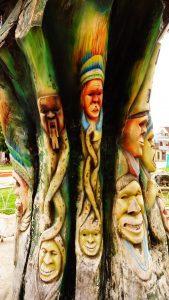
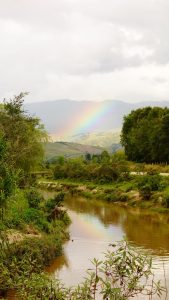

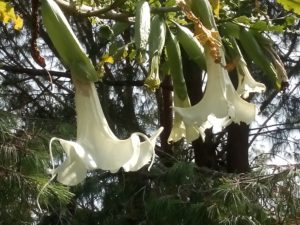
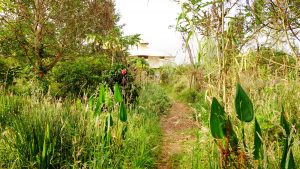
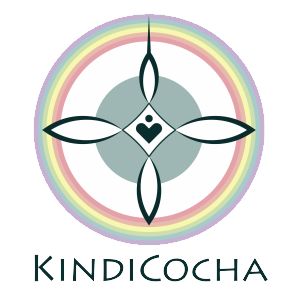
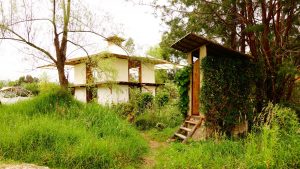

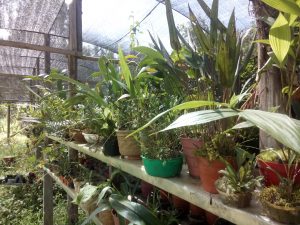
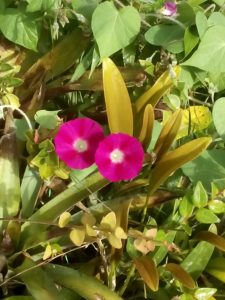
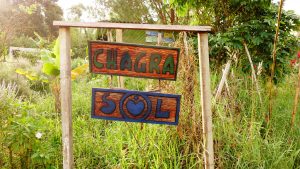
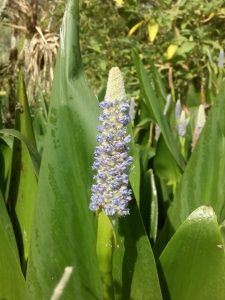
Recent Comments